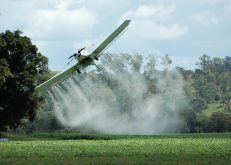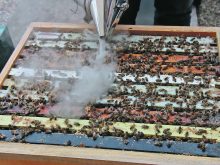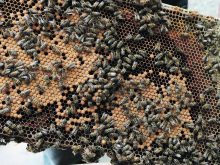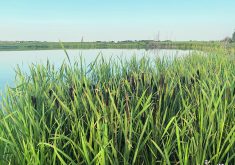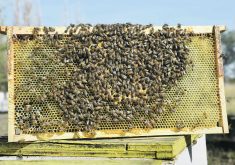Health Canada has determined that neonicotinoid seed treatments do provide economic value for Canadian corn and soybean growers.
For corn, the national economic benefit is $74.2 to $83.3 million annually.
“Or about 3.2 to 3.6 percent of the national farmgate value for corn in 2013,” the PMRA said.
“The majority of these benefits appeared to be realized in Ontario, and vary depending on the type of corn grown.”
As for soybeans, the PMRA estimated an economic benefit of $37.3 to $51 million, or 1.5 to 2.1 percent of the farmgate value for soybeans in 2013.
Read Also

Agritechnica Day 2: The future of tractor power, building quicker crop apps and large farms and tech
Agritechnica Day 2: The future of tractor power, building quicker crop apps with Syngenta and large farms and tech
PMRA officials released the estimates yesterday as part of a value assessment of corn and soybean seed treated with clothianidin, imidacloprid and thiamethoxam.
Bayer manufactures clothianidin and imidacloprid, selling them under the brand names Poncho and Gaucho. Thiamethoxam is a Syngenta product known as Cruiser.
The PMRA economic values for soybeans are much higher than estimates from the U.S. Environmental Protection Agency. In 2014, the EPA concluded that neonic seed treatments on soybeans are essentially useless.
“In our analysis of the economic benefits of this use, we concluded that, on a national scale, U.S. soybean farmers see little or no benefit from neonicotinoid seed treatments,” said Jim Jones, assistant administrator for EPA’s Office of Chemical Safety and Pollution Prevention.
The EPA estimated the economic benefit of neonics for soybeans at .14 percent.
The PMRA didn’t quantify yield increases from using neonic seed treatments. It said its economic benefit analysis was “based upon the estimated revenue lost as a result of decreased yield to the corn and soybean crop.”
In 2014, the Conference Board of Canada released a report on the economic benefits of neonic seed treatments.
It said restricting the use of neonics would reduce revenues from corn and soybean production in Ontario by $630 million annually.
PMRA economists considered the Conference Board information in its analysis, but they also relied on provincial government data, agronomists, grower associations, scientific journals, proprietary data and the EPA.
Anyone wishing to comment on the PMRA’s economic assessment for neonics can do so over the next 60 days. Email all comments to PMRA.publications@hc-sc.gc.ca
Contact robert.arnason@producer.com





